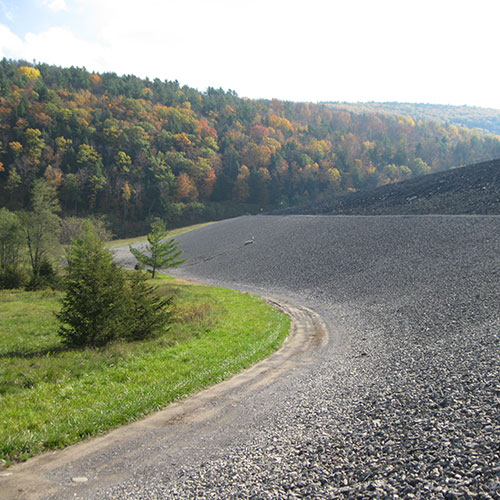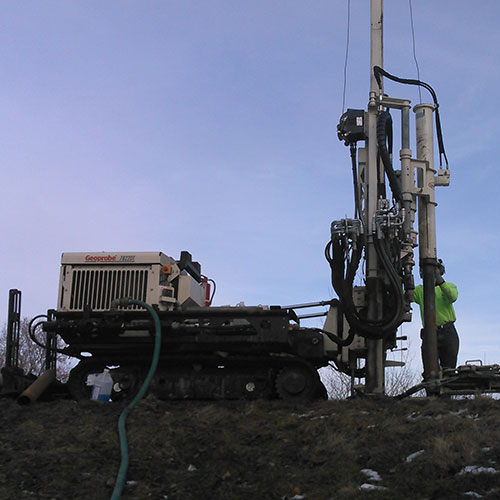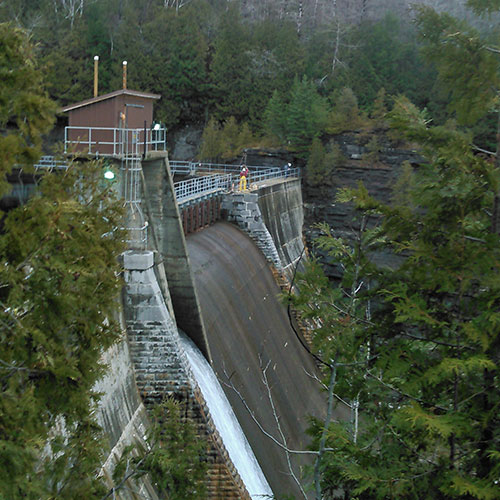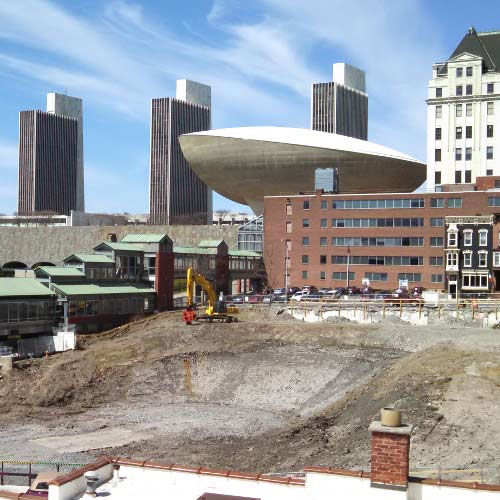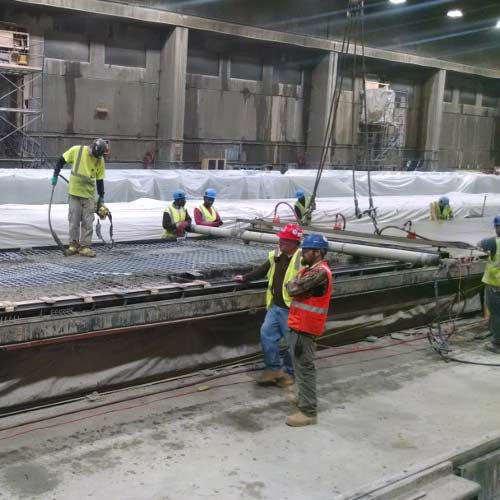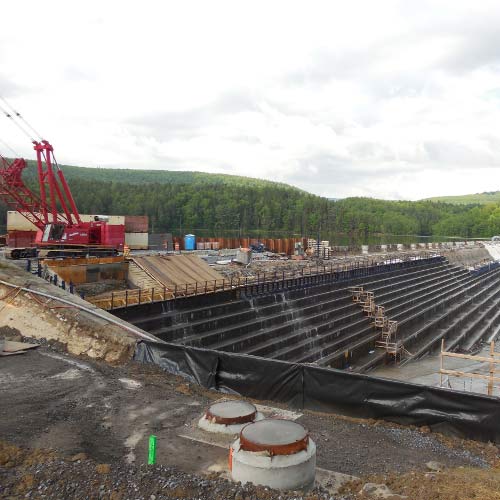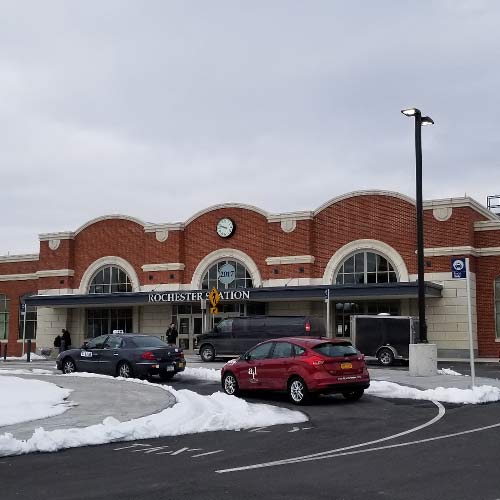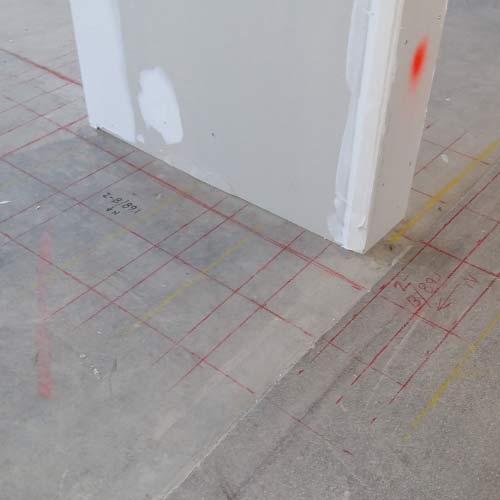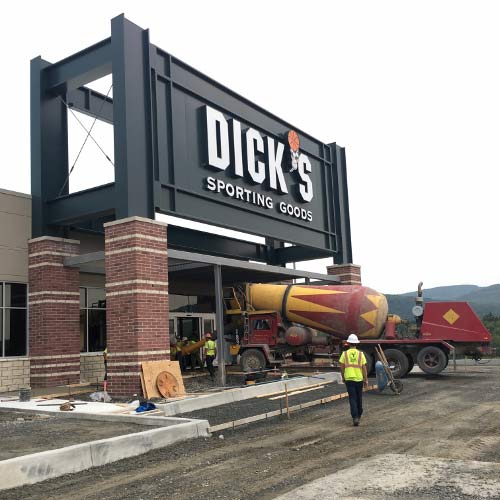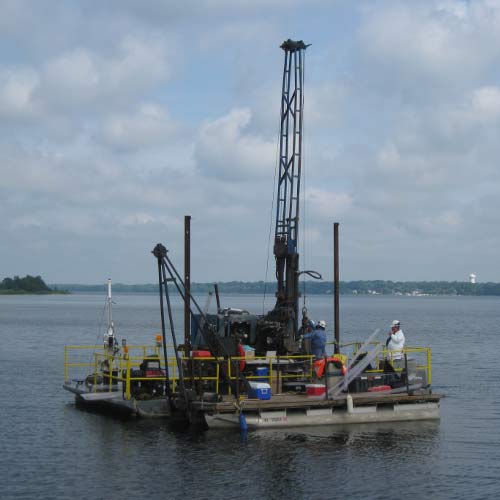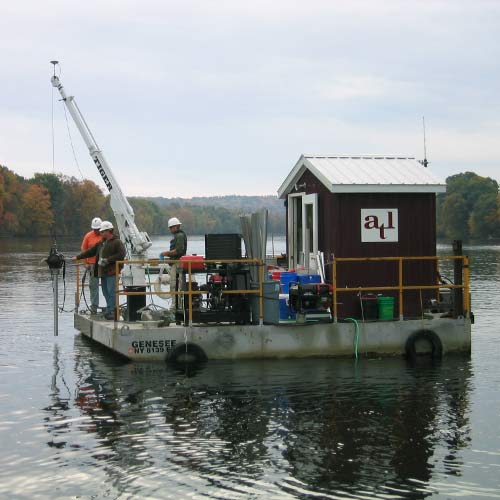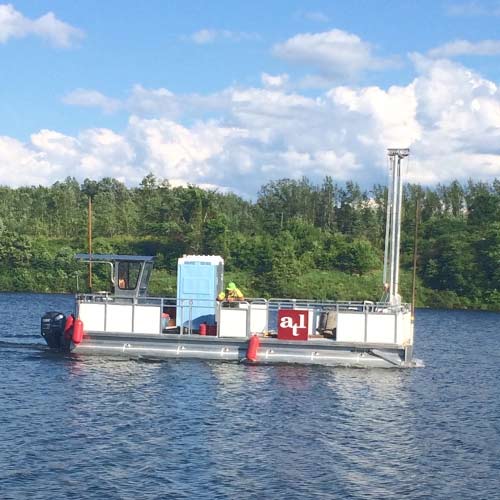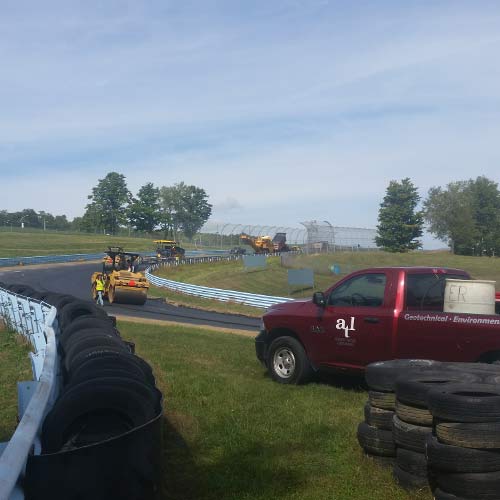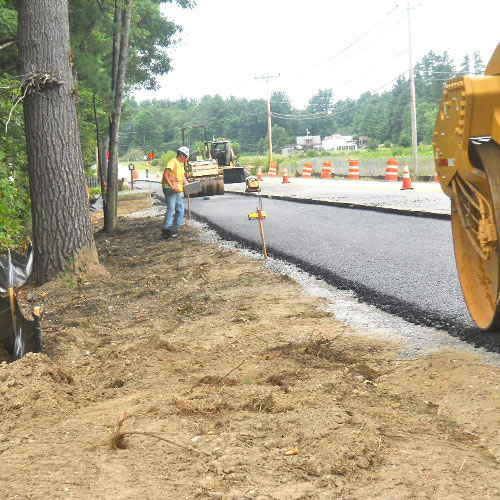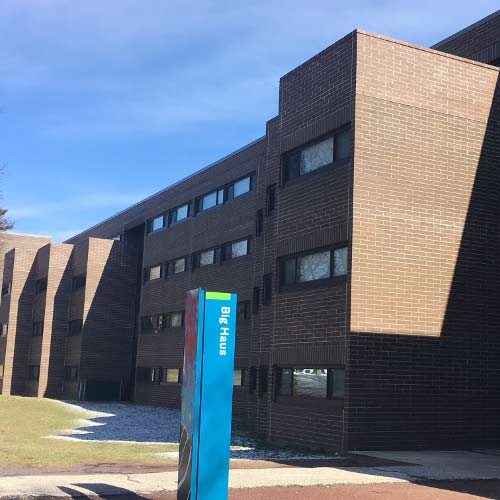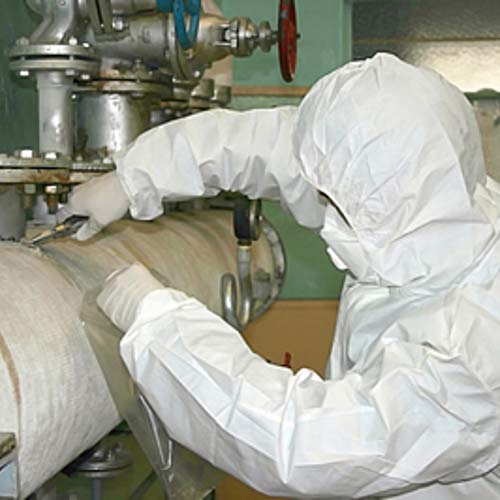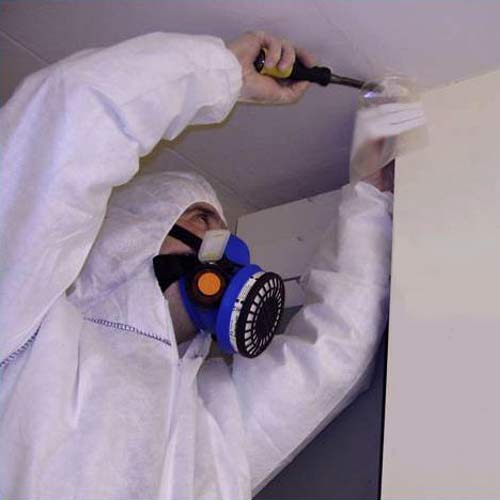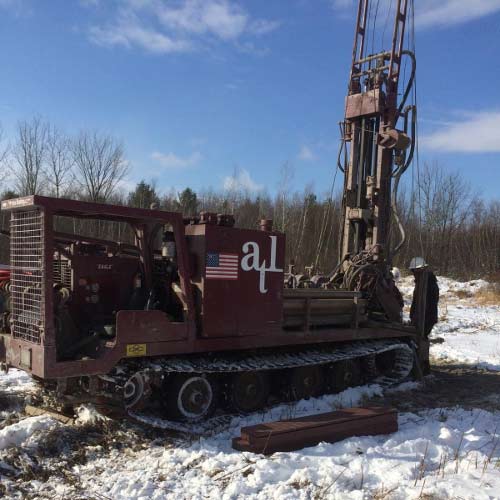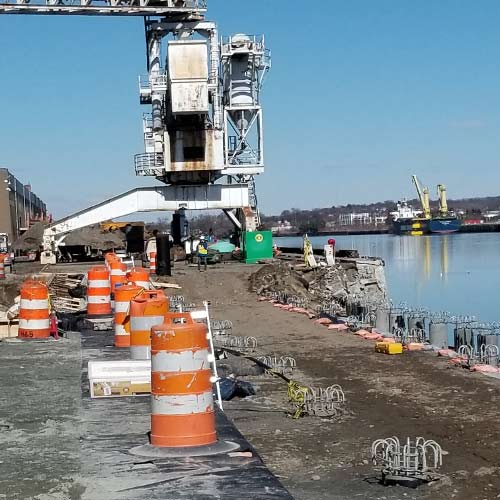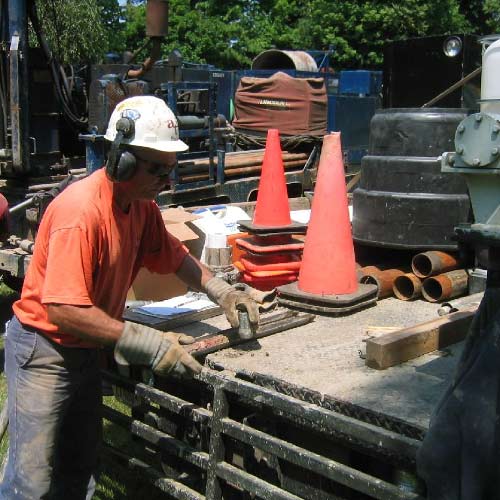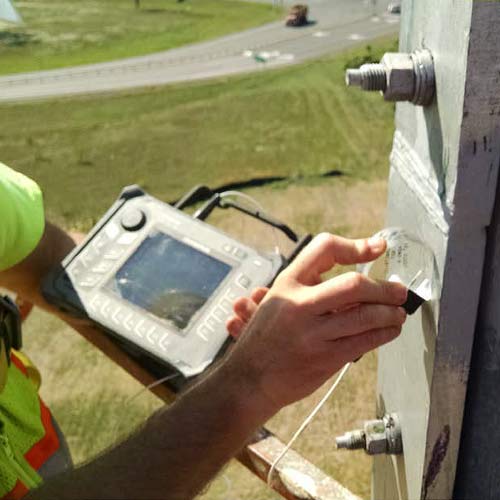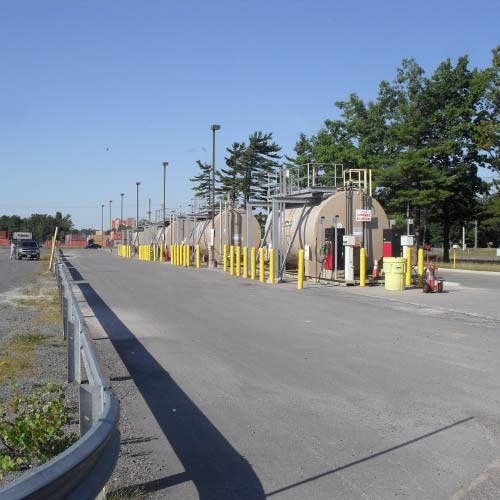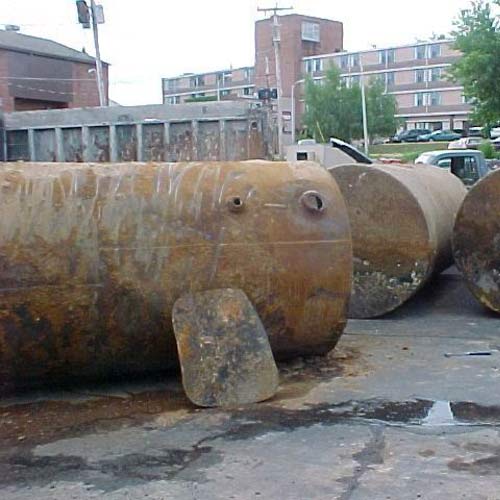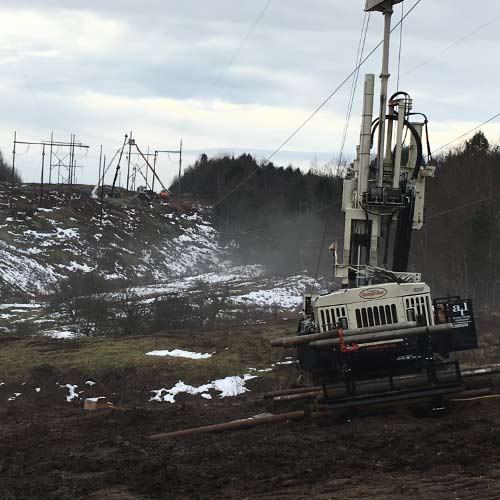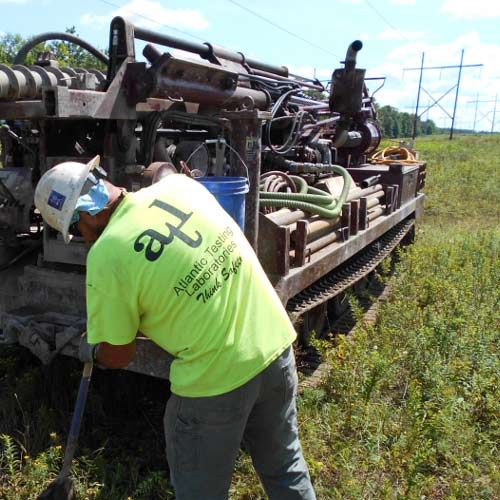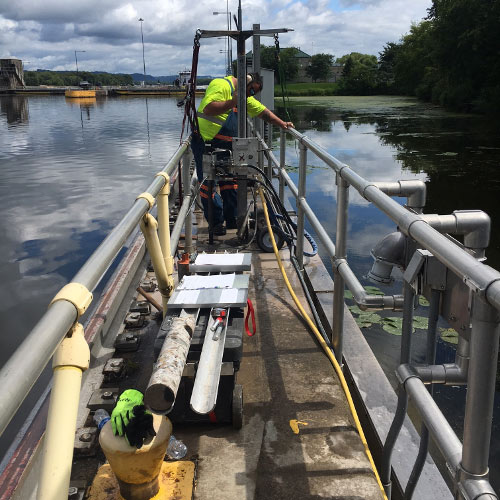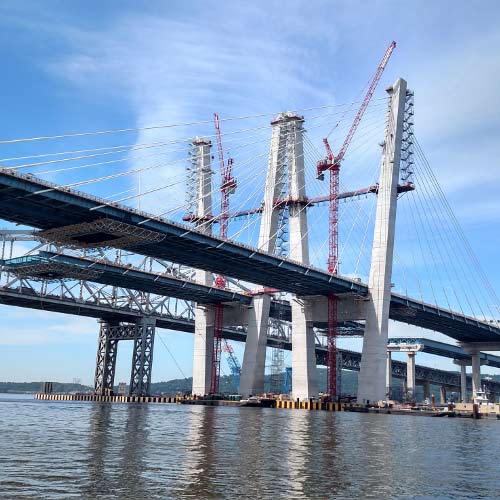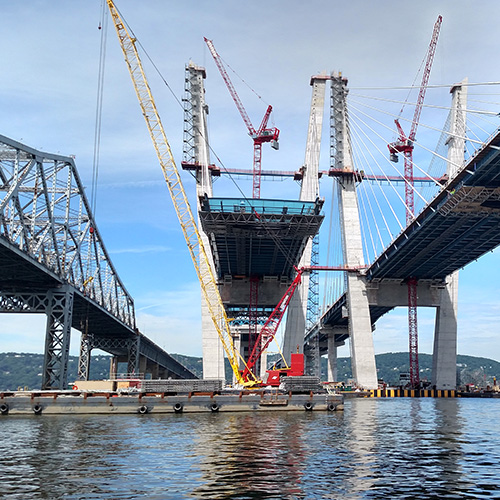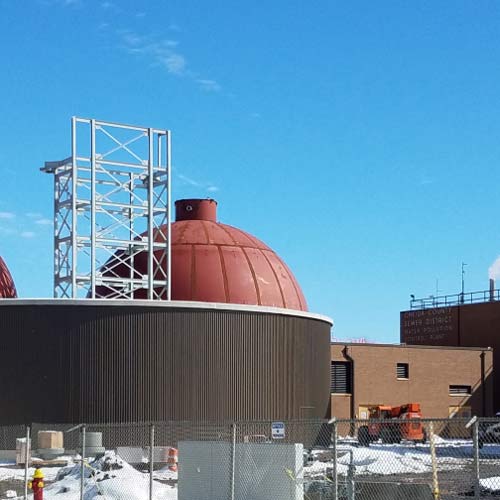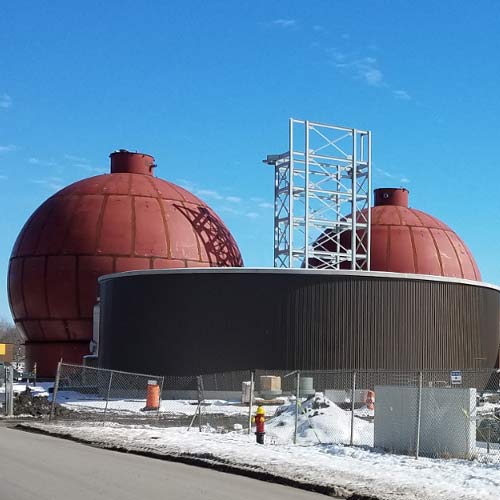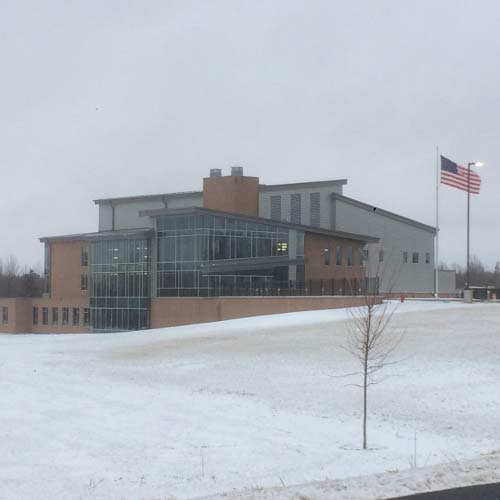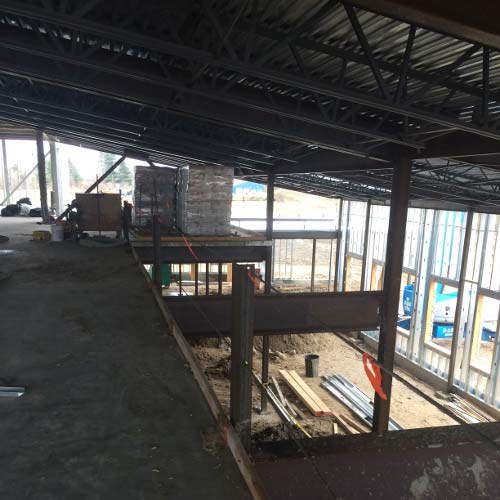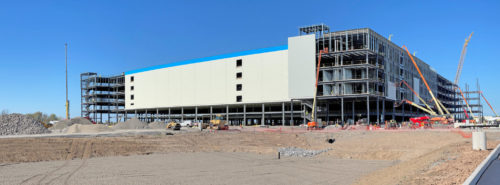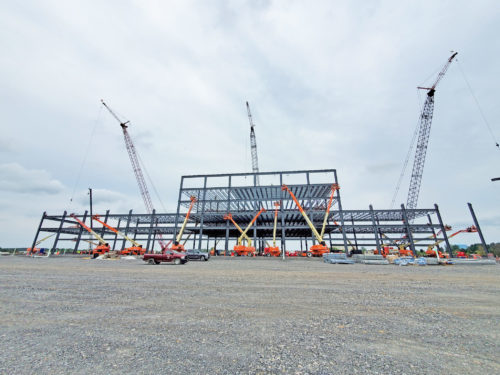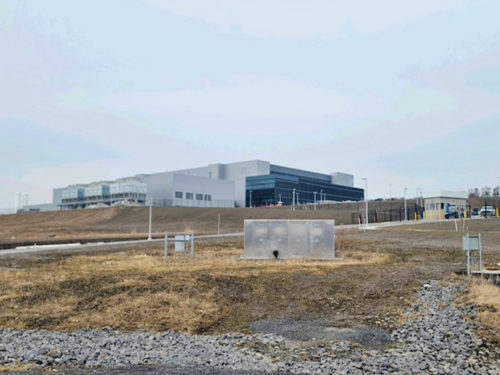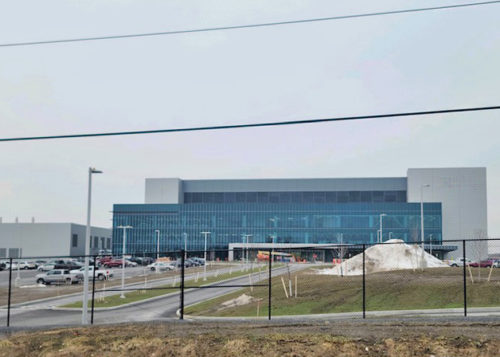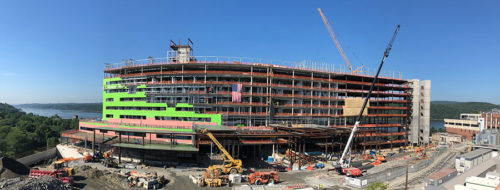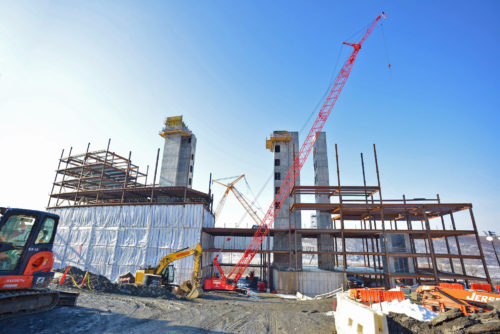Click the following link to view the PDF of this paper: Concrete Slab Delamination

Steven N. Moore, PE
Senior Engineer
Atlantic Testing Laboratories
Delamination is a common type of concrete slab distress. Surficial delamination is when the finished surface of the concrete separates from the underlying slab. Although surficial delamination may not significantly affect the structural integrity of the slab, it increases the susceptibility of the concrete to environmental impacts, decreases durability, hampers functionality, and is not aesthetically pleasing.
Surficial delamination occurs when air and/or bleed water is trapped below the finished surface, causing horizontal layers of weakened concrete or voids that detach from the rest of the slab. The depth of delamination typically ranges from 1/8 to 3/8 inches and can form in small pockets or large, widespread areas.
Sounding is a common method to identify areas of delamination that are not visible. This method is performed by tapping the slab with a hammer or dragging a steel chain across the surface. When problem areas are encountered, the tone will change from a sharp ringing to a dull or hollow sound.
One of the primary causes of delamination is premature finishing. If the finishing operation begins before the bleed water completely migrates to the surface, water becomes trapped beneath the troweled surface. The timing of final finishing is critical. Judging as to when a slab is ready for finishing can be made more difficult by environmental conditions. Humidity, temperature, sunlight, and wind all can make the slab appear that it is ready to be finished, when it may not be.
The first step in decreasing the chances of surface delamination is choosing the proper concrete mix design. If the slab will not be exposed to freezing and thawing cycles, the air content should be no more than 3%. Reducing the air content will make it less likely for air voids to become trapped and coalesce beneath the troweled surface. Avoid concrete mixes with high cementitious content and/or high percentage of fine material. These mixes have an increased water demand, resulting in excess bleed water and are more susceptible to shrinkage cracking. Use of chemical admixtures should be considered to reduce water demand while maintaining workability.
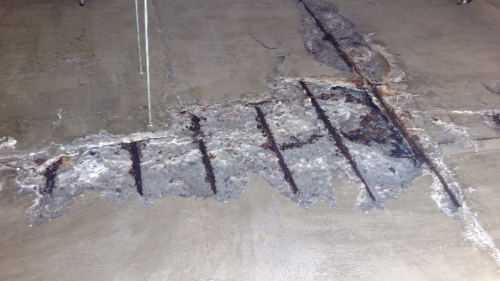 |
| Slab delamination due to reinforcement corrosion |
Permeable subbase can also reduce the chances of surface delamination. Impermeable barriers under the slab prevent water from escaping, thus increasing the amount of water migrating upward toward the finished surface. Delamination may also be caused by corrosion of reinforcing steel near the surface. Corrosion is an expansive reaction, and radial cracks develop around the reinforcing steel, due to the build-up of tensile stress around the corroding steel. When a layer of reinforcement is corroding, the cracks eventually become interconnected and the concrete will delaminate and spall at the surface.
Surficial delamination typically shows up soon after the concrete has cured. Corrosion delamination typically occurs in older structures exposed to chemicals or other environmental conditions. Petrographic analysis (ASTM C856) can show capillary voids left behind from bleed water migrating to the surface, and hardened air void analysis (ASTM C457) can analyze the air void structure in hardened concrete. Additionally, reinforcement corrosion can be evaluated and mapped out using half-cell potential measurements, as outlined in ASTM C876, Corrosion Potentials of Uncoated Reinforcing Steel.
For more information, contact Steven Moore, PE at 518-383-9144, info@atlantictesting.com, or visit AtlanticTesting.com.
|
ASSOCIATED SERVICES
|
 |

